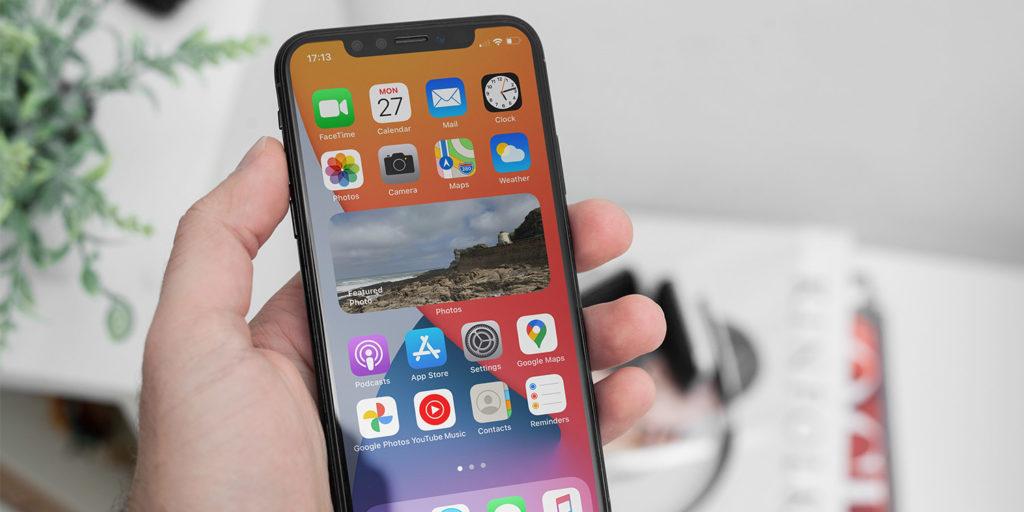screenrant.com How To Customize iPhone iOS 14 - Widgets, Folders, And More
An iPhone's home screen can get pretty messy as more apps are downloaded. These tips will help improve the phone's interface organization and design.
By Jam KotenkoPublishedShareTweetEmailiPhone users with iOS 14 or later installed can make their device's interface appear tidy and appealing by customizing how it looks and how apps are organized. Since the addition of app folders, widgets are probably the most significant design change to how iPhone apps are presented to let users preview information at a glance. When set up appropriately, widgets can make viewing an iPhone home screen a more pleasant and less anxiety-inducing experience.
Apart from organizing apps into folders and creating widgets for apps, customizing iOS app icons is a great first step to take in personalizing an iPhone's home screen aesthetic. While this process lets people see their favorite apps in a chosen design scheme, it won't display red number notifications that come with real app icons. Quick actions that appear when app icons are long-pressed won't work, either.
SCREENRANT VIDEO OF THE DAYRelated: iOS 14: How To Enable & Use Back Tap On iPhone

To begin customizing the appearance of an iPhone home screen, declutter it and decide which apps need to be accessible. The ones that aren't crucial to daily iPhone use can be accessed via the App Library. Long-press on an app, choose 'Edit Home Screen,' tap the (-) on the app icon, select 'Remove from Home Screen.' then hit 'Done.' Swipe left on any screen until the App Library is in view to find these relocated apps. Additionally, users can also choose 'Delete App' for apps that are no longer necessary.
Creating iPhone Folders, Pages, Widgets, And More
Once iPhone apps have been culled, organize them into app folders arranged into preferred categories. Long-press on any spot on the phone screen until the apps jiggle and drag an app icon into another app icon to create a folder. Drag other similar apps into the folder. To rename the new folder, long-press the folder icon, choose 'Rename,' type the new title, then tap the home screen and hit 'Done' to save.
Next, decide which apps or app folders need to be on the main home screen—ideally, these are apps that are most accessed daily. Users can assign other apps to another home screen page. Long-press on an app or folder, then drag it to the right edge of the screen to start a new page. When several home screen pages exist on an iPhone, a bright dot in a row of dots above the Dock shows which page the user is on. Users can reorder pages differently—simply long-press an empty area of the home screen, tap the dots that appear near the bottom of the screen, drag a page to its new spot, then tap 'Done.' Users can also hide and remove multiple home screen pages. Again, long-press an empty area on the home screen, tap the dots that appear above the Dock, tap the circle under the page to hide, then tap 'Done' on the top-right corner of the screen. The steps are the same to unhide a page. To remove the page, tap the (-) button on the corner of the page, then tap 'Remove' before hitting 'Done.' When a page is removed, apps on it will still appear in the App Library.
The most crucial design tweak users can make to personalize their iPhone home screens and improve overall ease of use is adding iOS widgets for the most-used apps to either the home screen or the Today View page (the quick-access page users can get to by swiping right on the main screen). Some widgets can be further edited to show specific information by long-pressing it and picking 'Edit (Widget Name)' from the quick actions menu, if available. In addition, users can group widgets into widget stacks to save on home screen real estate. To customize a widgets stack—that can contain up to ten widgets—long-press an empty spot on the screen, drag a widget on top of another widget, then tap 'Done.' To add a pre-built collection of widgets, long-press an empty spot on the screen, tap the + on the top-left corner, scroll and choose 'Smart Stack,' then hit 'Add Widget. iPhone third-party apps like Widgetsmith can also be used to transform how widgets look in terms of design or color.
Next: iOS 14: Customize Your iPhone Home Screen With Widgetsmith
Source: Apple 1, 2, 3
ShareTweetEmailHere's How Apple Cools The Mac Studio & Stops It From Overheating Related Topics About The AuthorJam Kotenko (53 Articles Published)Jam Kotenko is a long-time freelance writer based in Seattle with a focus on cool tech, social media, entertainment, and lifestyle. Her bylines have appeared in publications such as Digital Trends, The Daily Dot, and Bustle and was often tapped to test and review new mobile apps, compile best-of lists, and share details on her OKCupid success story. Additionally, she has also written personal essays about her experiences relating to marriage, motherhood, and everything in between. She recently contributed articles relating to the ongoing coronavirus pandemic for Nautilus Magazine.She is a full-time stay-at-home mom to two rambunctious boys and a nap-loving dog. Along with her husband, she is currently on a health and fitness kick and is hoping to run her first marathon in late 2022.








